My 2003 530i stick sport has had a misfire that seems to rear its head annually when the temperature drops. I’ll start the car, it’ll idle a little rough, then the Check Engine Light (CEL) will come on. Usually, if I shut the car off and re-start it, it’ll go away, but occasionally it’ll persist for longer. This hasn’t been an issue for around-town driving, but last week I needed to go to Long Island with my sister to see an old friend and I didn’t want to be in a situation where the misfire re-appeared and drove the car hundreds of miles with a misfire (the unburned fuel is bad for the cylinder walls and the catalytic converter), so we took my sister’s 120,000-mile 2012 Honda Civic instead. Oh the indignity! I wanted this fixed before winter made it inconvenient to pull one of the must-garage cars out of its seasonal slumber. So, before any white stuff fell, I kicked my Z3 M Coupe out into the driveway and pulled the E39 into the garage in preparation for the quick repair.
I’ve written about stick coils several times. I penned a detailed piece for Hagerty about how diagnosing a misfire is the best application for the Check Engine Light and a code reader—plug in the reader, verify that it pulls a single misfire code for a single cylinder (e.g., P0304, misfire on cylinder #4), buy a new stick coil, install it, done. My recollection was that this had recently happened twice on the E39, and thus that I’d recently replaced two of the stick coils (the mention of replacing #5 was in a BimmerLife piece here). My rule of thumb here is that, like changing the pitcher after two singles in a row are drilled up the middle, if another misfire happens after that, you should replace all of the stick coils so you can stop playing whack-a-coil. So I hopped on Amazon, looked at my order history, saw that I’d twice ordered Bosch 00124/0221504464 stick coils, and put four more on order so I’d have a matched set. They’re only $21 each.
And then, like my two other recent supposed quick-hit-and-run repairs (a valve adjustment in my E9 and fixing the E39’s truck actuator), it became more complicated.
Even though I was replacing all of the coils (well, the rest of them), I was curious which one had misfired, so I connected the ancient Actron CP9135 that I keep in the car just in case the CEL gets lit, cracked the key to ignition, and read the codes. To my surprise, it came up clean. Had I already cleared it? I couldn’t remember. Ah, the joys of being 65. Both the car and I had plausible deniability as to whether or not it had really misfired.

Hmmmn.
No matter. Replacing stick coils is easy. You pull off the cabin filter housing, remove the two 10mm bolts holding on the fuel rail cover, and the two more holding on the false valve cover. That exposes the coils. Lift up the latches, slide out the electrical connectors, and wiggle the stick coils out of the spark plug recesses where they sit. It’s maybe ten minutes of work to get in there, maybe five to swap the coils, and maybe ten more to button things back up. That’s it. Very little can go wrong. Go wrong. Go wrong. (Original Westworld movie trailer quote. Sorry.)
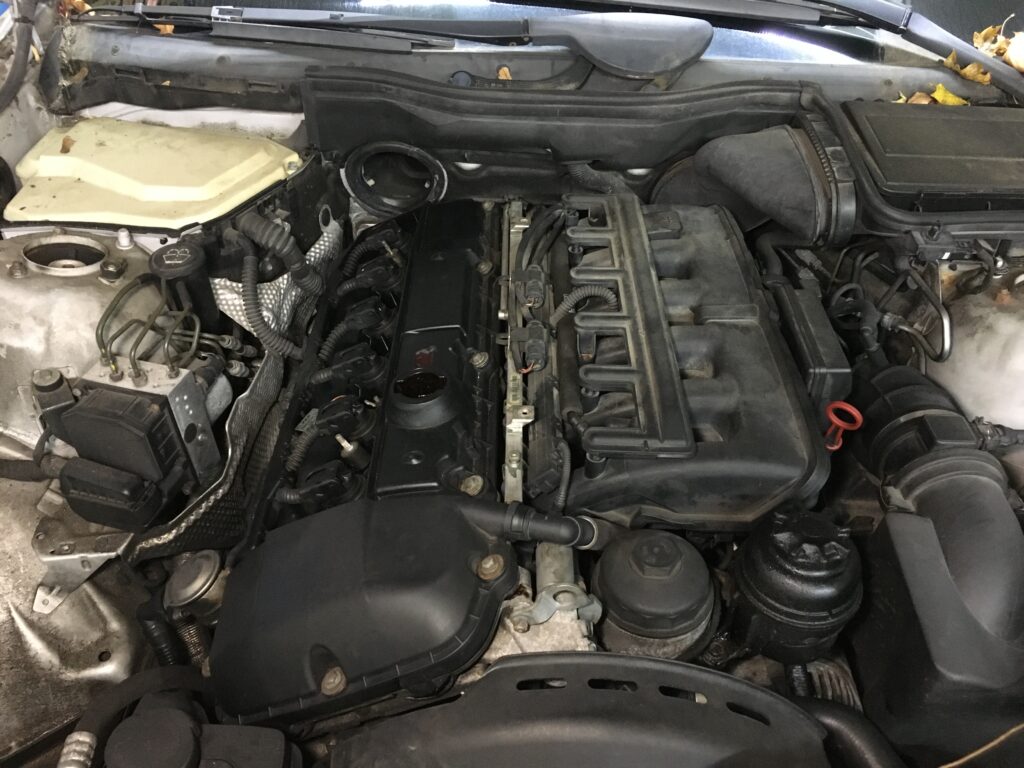
Denuding the engine of cabin filter, fuel rail cover, and coil cover is trivial.
Out came all six stick coils. I arrayed them in order. Initially, the mixture of new and old looked perfect, as four of them were grey and two were brown, but then I looked at them more carefully. If you look at the shape of the tips instead of the color, five of the six of them have finned tips. Only the 3rd one from the left has a smooth tip.
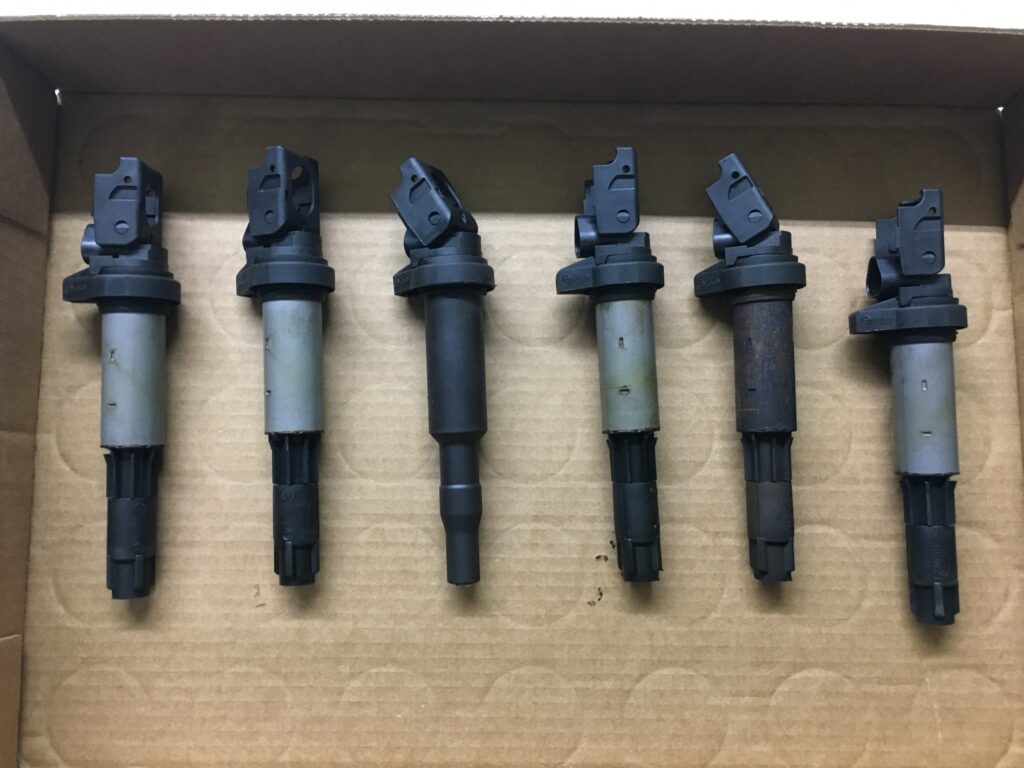
Two of these things are not like the others. Oh, wait. Only one.
I was so positive that I’d replaced two of them that I re-checked both the Amazon orders and the dates of my two articles. Amazon reported I bought one coil in October of 2018 (so, okay, maybe not as recently as I’d recalled), and the Hagerty piece on replacement of #4 coil went up that December, so that meshed. Another coil was purchased in March 2020, and the BimmerLife piece referencing replacement of coil #5 went up immediately after. The coils in the above photo are positioned with #1 at the right. So, #4 coil being different made perfect sense. But why was #5 a finned coil and not a smooth one?
I tried to read the dates off the coils, but I wasn’t certain of the date format, so I unboxed one of the new coils, both so I could verify that it was the same smooth-tipped style as #4 and so I could verify that its date format was the European YY-MM-DD style, and it was.
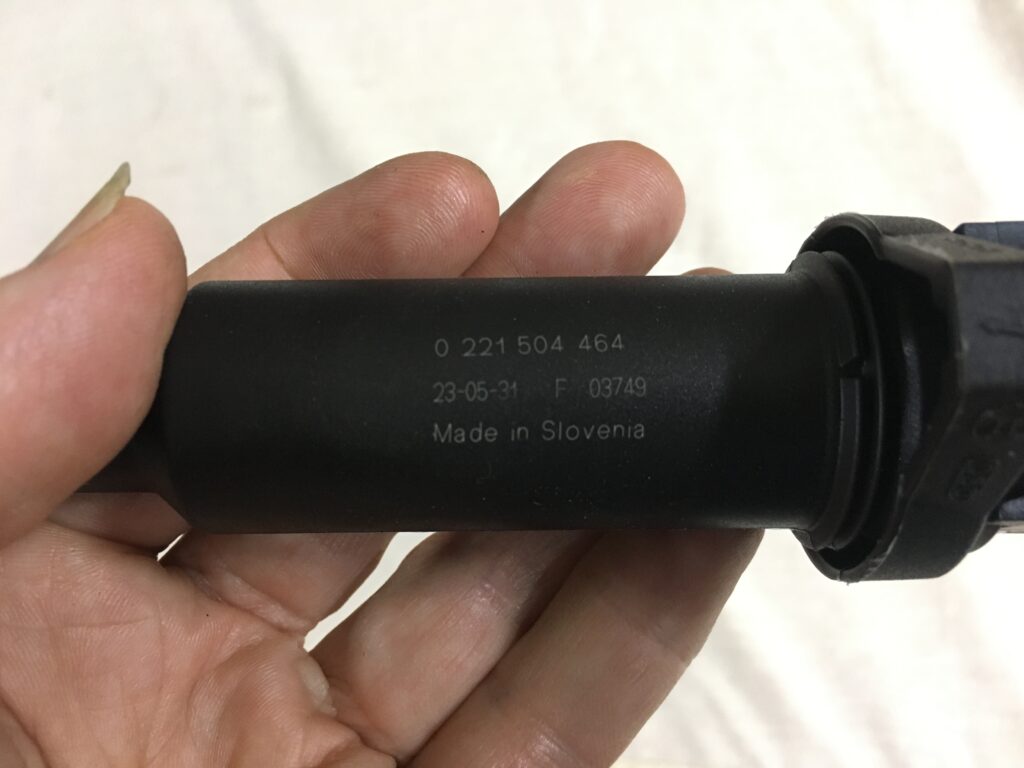
Those wacky year-first Europeans.
Then I looked at the date of #4, and verified that it made sense as the one purchased in 2020 and swapped.
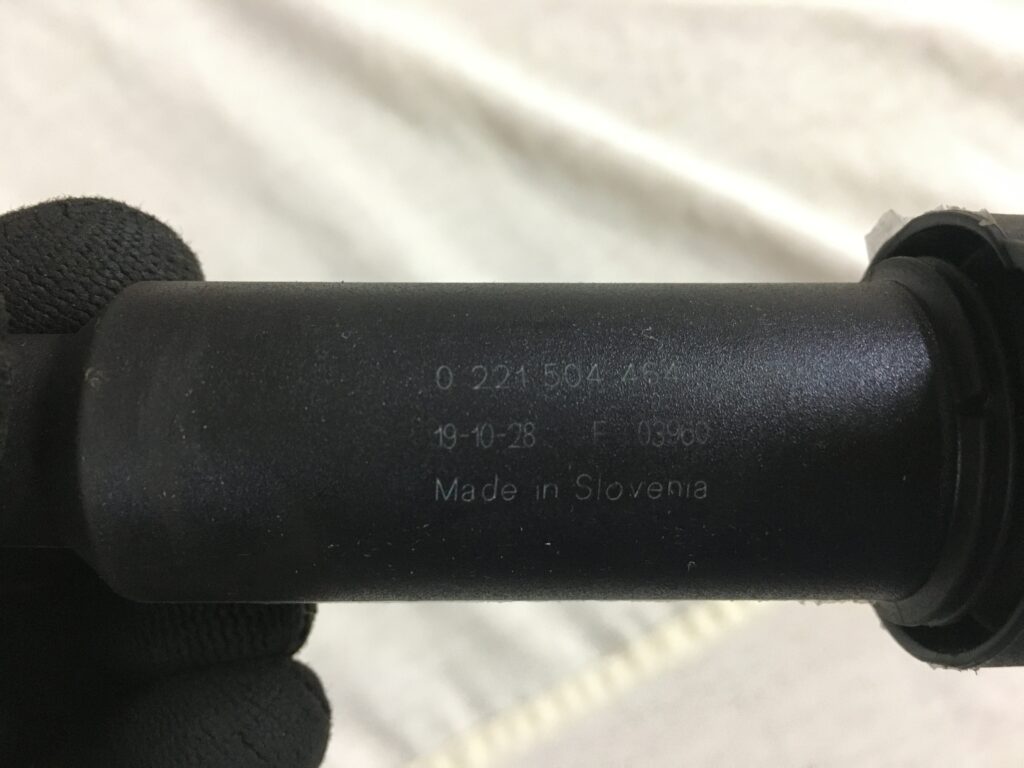
End of October 2019. Perfect.
All of the other coils were dated 2007, so they must’ve been replaced by the previous owner shortly before I bought the car.
But where was the coil for which I had two pieces of documented evidence that I’d bought and installed it in 2018?
I went to the box of assorted E39 parts sitting on a shelf in the garage. It includes both good used parts as well as new odds and ends like spare clips and the little lids that hide the valve cover and fuel rail bolts. To my stunned surprise, inside it was a Bosch box with a stick coil in it.
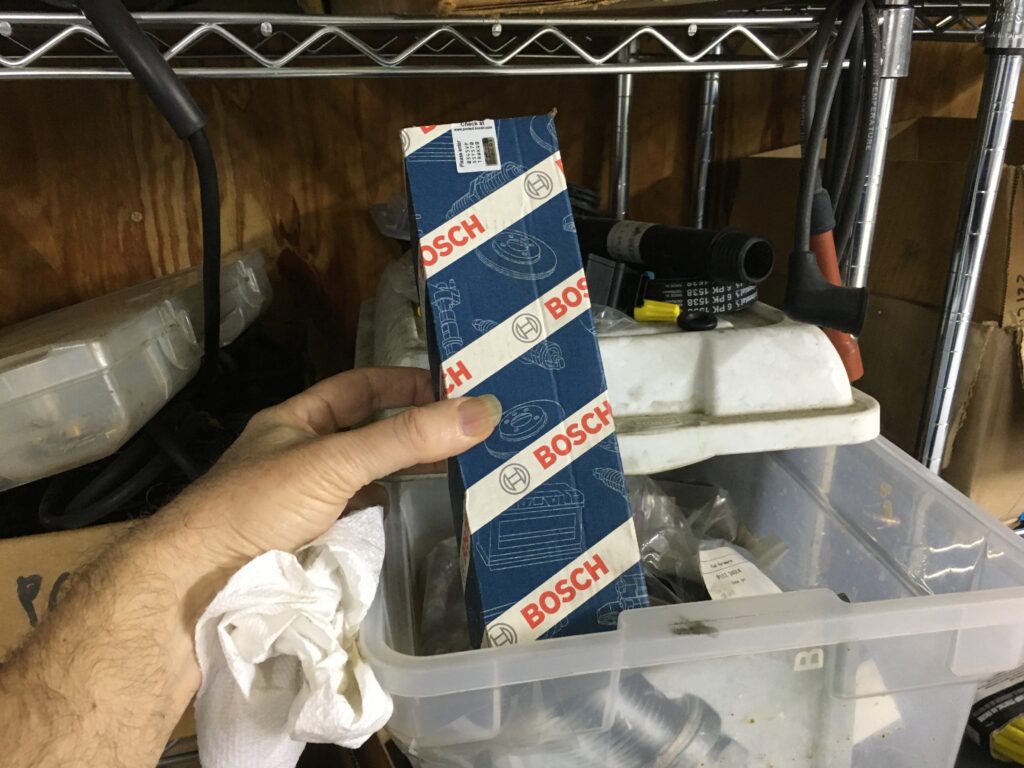
What the…?
I checked the date on the smooth-tipped coil, and it was May 2017, which sort of jived with the purchasing data, as it could’ve been on an Amazon vendor’s shelf for seventeen months when I purchased it in October of 2018.
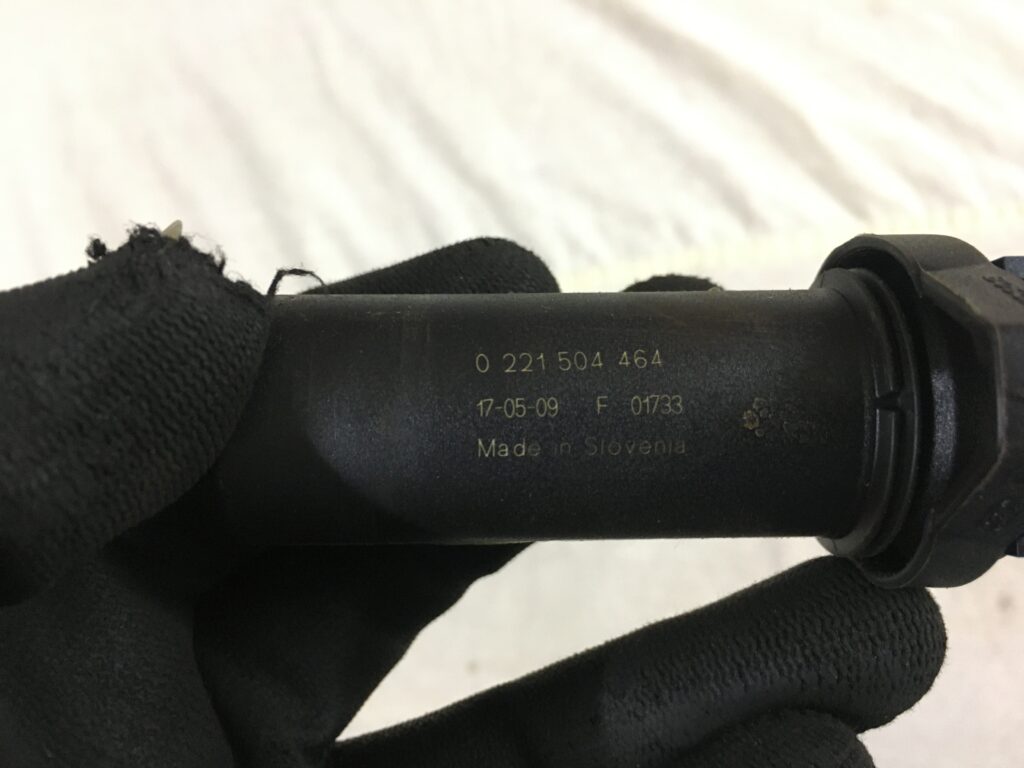
Okay…
But why hadn’t I installed it? It didn’t make sense.
Then I looked more carefully at the coil and saw that its bottom was covered with gunk. This coil had been installed.
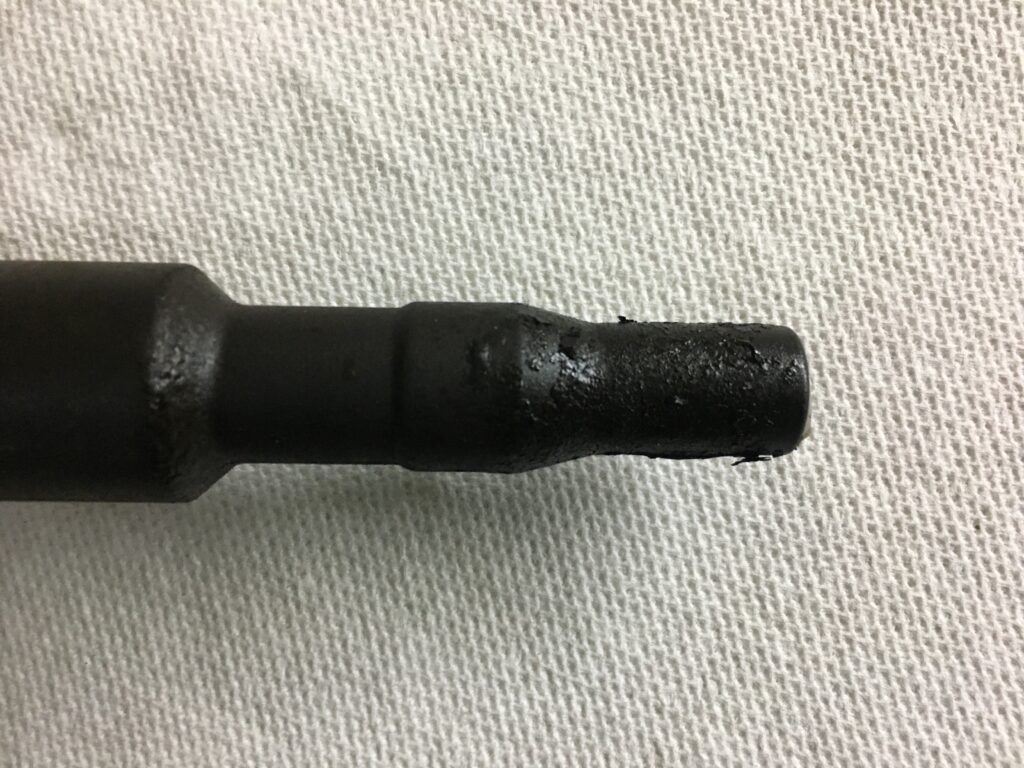
The thick plotkins.
So, what? I’d installed this coil, had another misfire from the same cylinder, put the original coil back in, and have no recollection of it? I felt like Gandalf reaching a crucial branch point in the mines of Moria and saying “I have no memory of this place.”
Due to the joys of next-day delivery, I decided to spend another $42 and order two more stick coils so I could install a full fresh set. I also decided that since I had no idea when the plugs had been replaced and it was possible that they and not a coil was the cause of the intermittent misfire, with the coils out, now was the perfect time to change the plugs, so I added a set of NGK 3199s to the order. Due to the deeply-recessed plug holes in these coil-on-plug engines, before the old plugs are removed, care must be taken to blow out any particulate crud that fell down there.

Compressed air is your friend.
The parts should arrive tomorrow. With six new stick coils and plugs, I’ll be pretty surprised if the misfire returns.
The car’s slowly-dying power steering pump, however, is another matter. Every year I’ve owned it, dropping temperatures herald a return of the steering being incredibly stiff until it’s wrestled a bit. It used to just need one or two cranks as a backed it out of the driveway, but recently it’s stayed stiff all the way down the block.
Ah, 200,000-mile cars. The gift that keeps on giving.
—Rob Siegel
____________________________________
Rob’s newest book, The Best of The Hack Mechanic, is available here on Amazon, as are his seven other books. Signed copies can be ordered directly from Rob here.





















